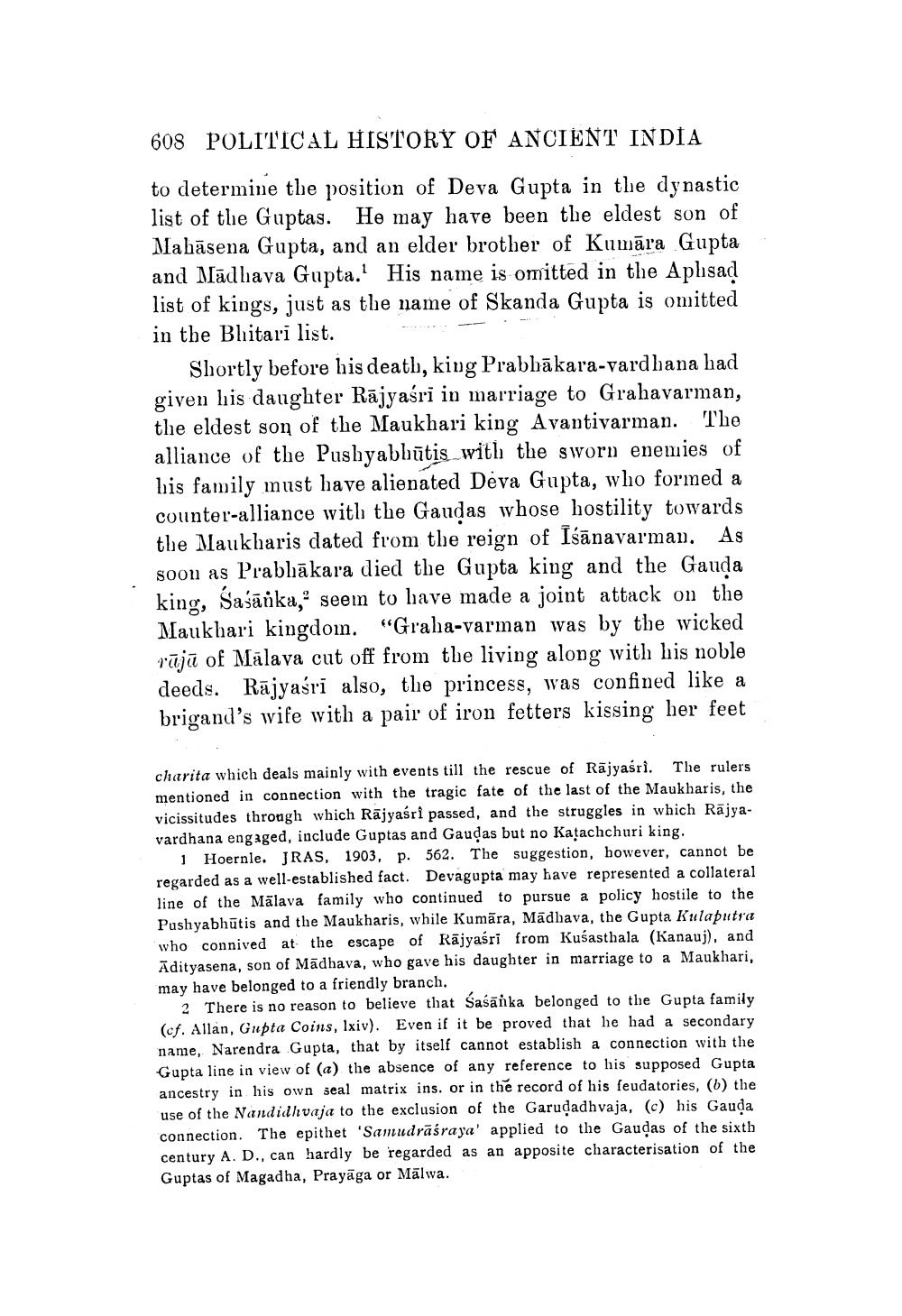________________
608 POLITICAL HISTORY OF ANCIENT INDIA
to determine the position of Deva Gupta in the dynastic list of the Guptas. He may have been the eldest son of Mahāsena Gupta, and an elder brother of Kumāra Gupta and Madhava Gupta.' His name is omitted in the Aplisad list of kings, just as the name of Skanda Gupta is omitted in the Bhitari list.
Shortly before his death, king Prabhākara-vardhana had given his daughter Rājyasri in marriage to Grahavarman, the eldest son of the Maukhari king Avantivarman. The alliance of the Pushyabliūtis with the sworn enemies of his family must have alienated Deva Gupta, who formed a counter-alliance with the Gaudas whose hostility towards the Maukharis dated from the reign of Īsānavarman. As soon as Prabhākara died the Gupta king and the Gauda king, Saśānka," seem to have made a joint attack on the Maukhari kingdom. "Graha-varman was by the wicked rūū of Malaya cut off from the living along with his noble deeds. Rājyasri also, the princess, was confined like a brigand's wife with a pair of iron fetters kissing her feet
charita which deals mainly with events till the rescue of Rājyasri. The rulers mentioned in connection with the tragic fate of the last of the Maukharis, the vicissitudes through which Rajyasri passed, and the struggles in which Rajyavardhana engaged, include Guptas and Gaudas but no Katachchuri king.
1 Hoernle. JRAS, 1903, p. 562. The suggestion, however, cannot be regarded as a well-established fact. Devagupta may have represented a collateral line of the Mälava family who continued to pursue a policy hostile to the Pushyabhūtis and the Maukharis, while Kumāra, Madhava, the Gupta Kulaputra who connived at the escape of Rājyasri from Kusasthala (Kanauj), and Adityasena, son of Madhava, who gave his daughter in marriage to a Maukhari, may have belonged to a friendly branch.
2 There is no reason to believe that Saśānka belonged to the Gupta family (cf. Allan, Gupta Coins, lxiv). Even if it be proved that he had a secondary name, Narendra Gupta, that by itself cannot establish a connection with the Gupta line in view of (a) the absence of any reference to his supposed Gupta ancestry in his own seal matrix ins. or in the record of his feudatories, (b) the use of the Nandidhvaja to the exclusion of the Garudadhvaja, (c) his Gauda connection. The epithet 'Samudrāśraya' applied to the Gaudas of the sixth century A. D., can hardly be regarded as an apposite characterisation of the Guptas of Magadha, Prayāga or Mälwa.




